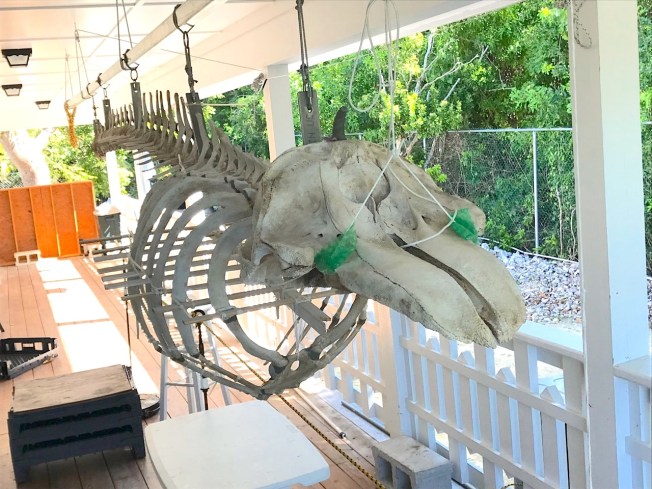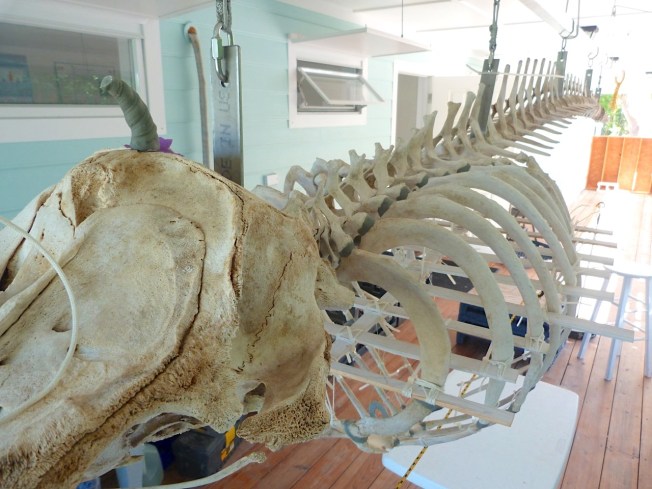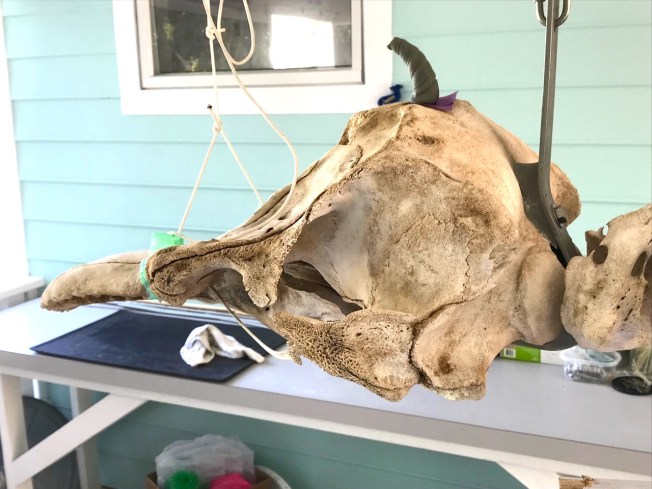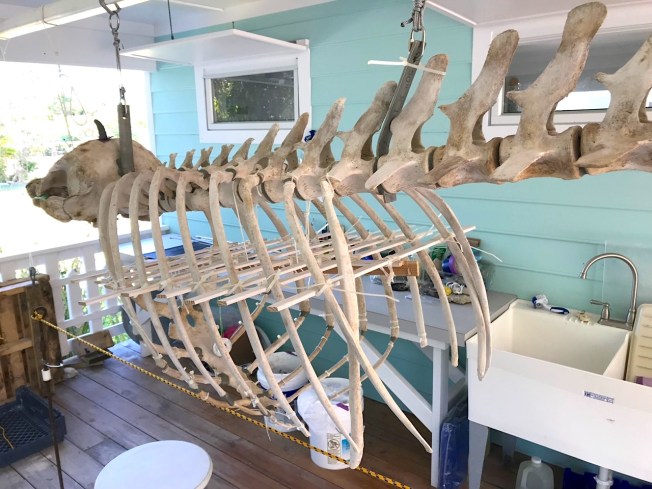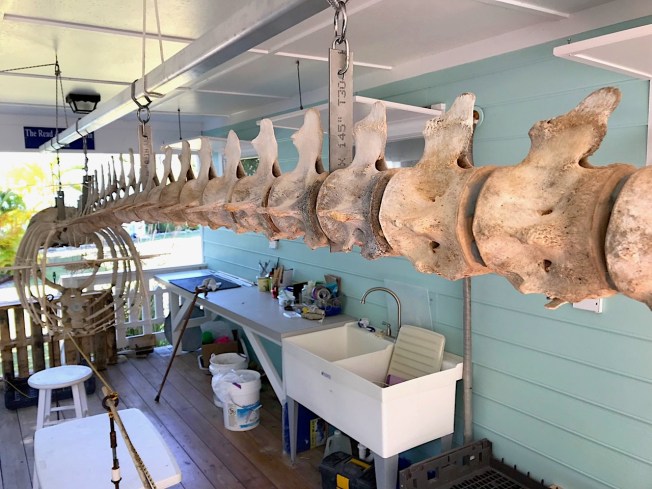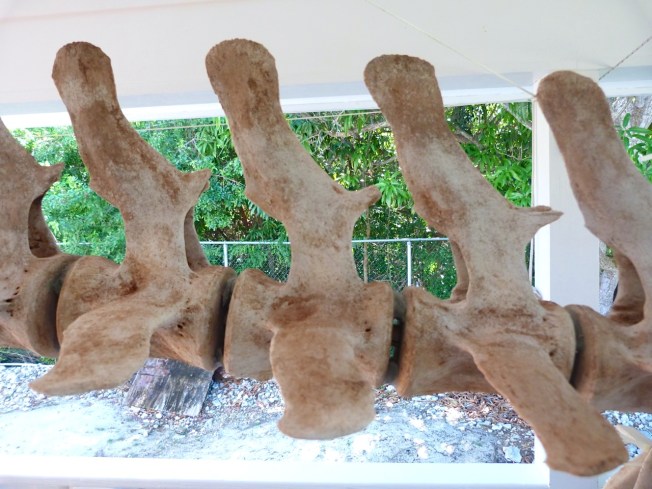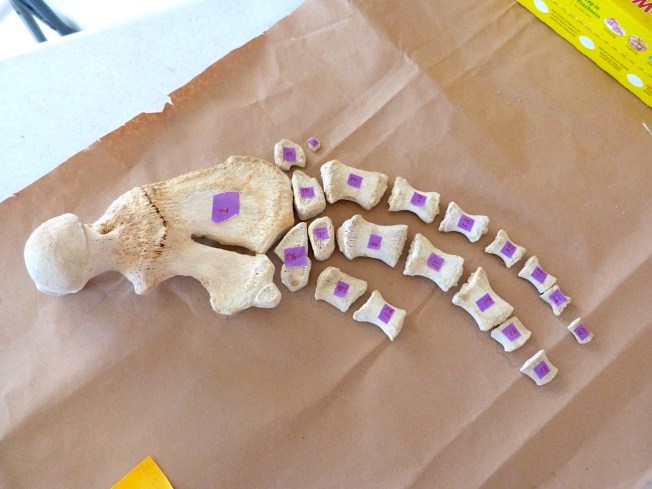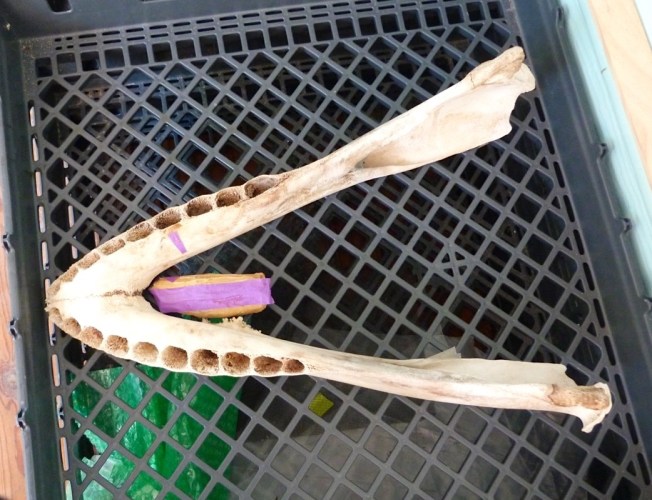THE ARTICULATE WHALE (2): MARINE SCIENCE ON DISPLAY
A couple of months back I wrote about the fate of the false killer whale Pseudorca crassidens (in fact a species of dolphin) that was stranded on Duck Cay. After its discovery, it was cut up, buried for many months before being disinterred, cleaned… and made ready to be reconstructed for display at Friends of the Environment, Marsh Harbour for research and educational purposes. The poor dead creature was destined to have a future ‘life’ (in a sense) as an exhibit. You can read the details and see the various stages of the preparatory processes (including some gory images) HERE.
The FKW joint project (see below for participants) has taken more than a year. The final stage has been similar to doing a jigsaw puzzle, with the added complication that it isn’t entirely clear where or even whether all the pieces fit – there may even be one or two leftover small bones when the reconstruction is finished.
Since I last wrote about the ‘rearticulation’ project, I have spent some time on Abaco. A highlight was our visit to FotE to meet the jocundly-named ‘Ducky’ of Duck Cay [I’d have gone for ‘Killer’ as a name – there’s no such thing as bad publicity]. Incidentally the strange item on the whale’s skull is in fact nothing to do with the creature’s real structure – it’s a natural historian’s unicorn-related jest…
Besides identifying all the bones and numbering them, those working on this project have had to devise ingenious methods for display to make the reconstruction as accurate as possible – not an easy task with a creature nearly 20 feet long.
It would be against the principles of this blog to miss out on an obvious open goal of an opportunity for an apposite final caption…
A WHALE TALE THAT ENDS WITH THE WHALE TAIL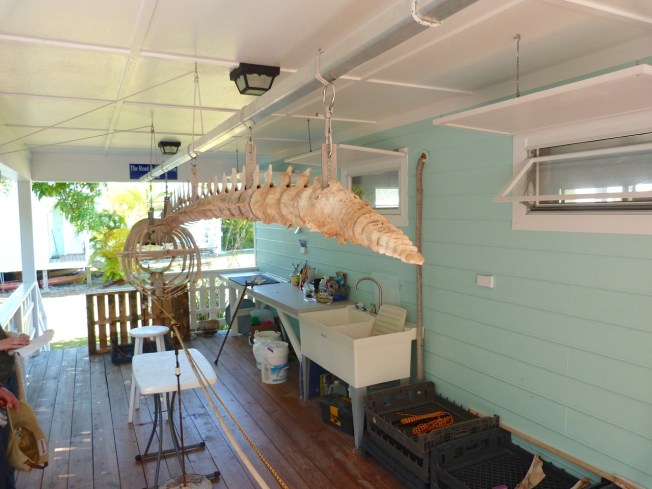
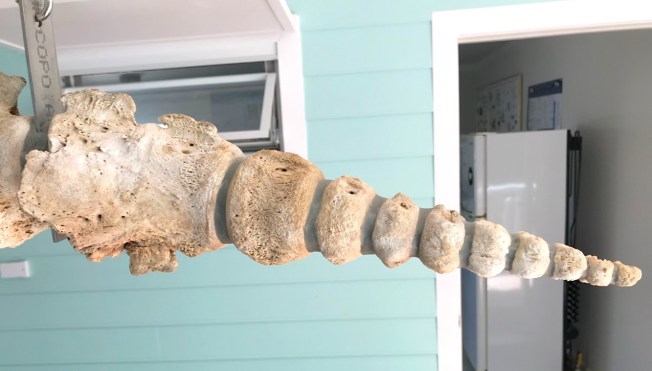
This ambitious year-long project has involved BMMRO, FOTE, BEP (Bahamas Environment Protection Foundation), interns, and volunteers. A number of children from local schools have already been to visit Ducky and been completely fascinated. A dead stranded whale now has a new incarnation, and a new story to tell.
ARE STRANDINGS FREQUENT – AND WHY REPORT THEM?
Each year there may be half-a-dozen reports of cetacean strandings in Abaco waters, both whales and dolphins. As far as I can make out, the animals are almost invariably dead. If still alive, reporting is clearly urgent to ensure a quick response and to maximise the creature’s chances of survival. If dead, a carcass can provide scientists with valuable data on the biology and health of marine mammals and, in turn, the health of our marine ecosystems. This includes basic information, such as an animal’s age, its size, the types of prey it consumes, and the occurrence of diseases. Necropsies can provide more detailed information to add to the growing knowledge-base of marine mammal populations.
And a project like this one, with its great educational potential, can in effect enable a stranded marine mammal to tell its story even after death.

